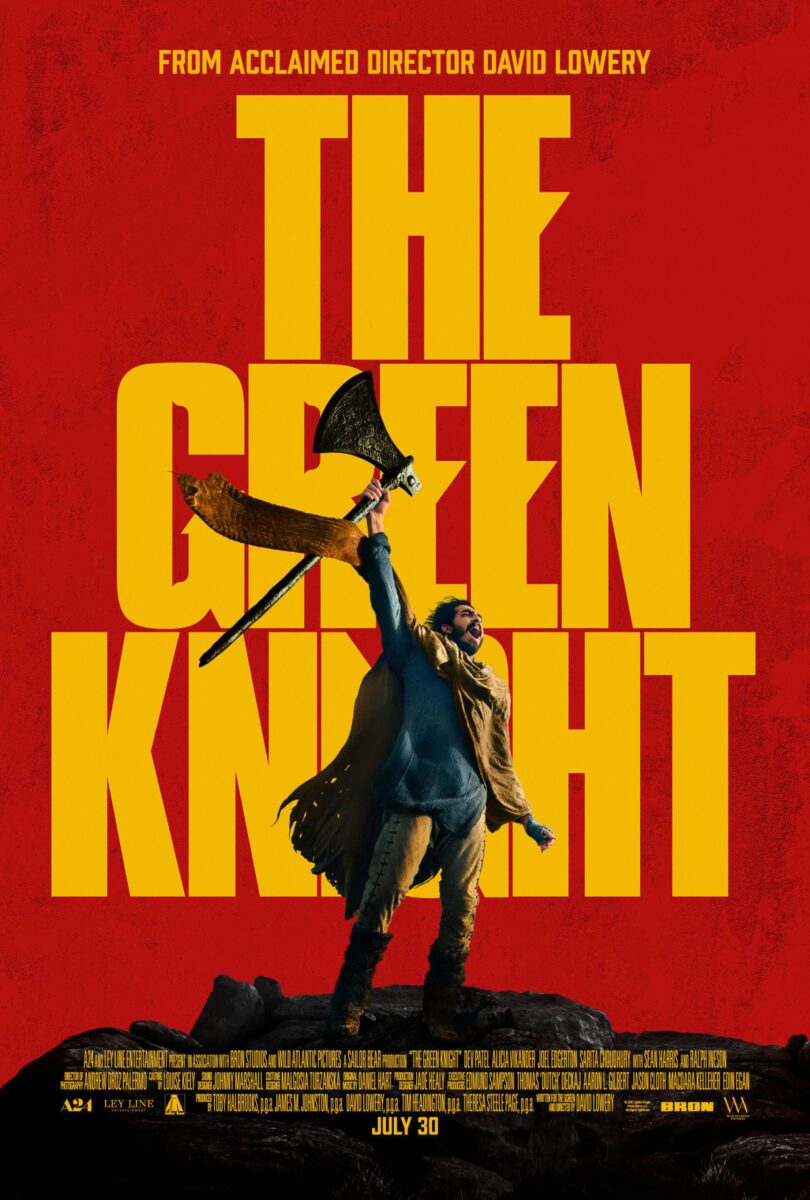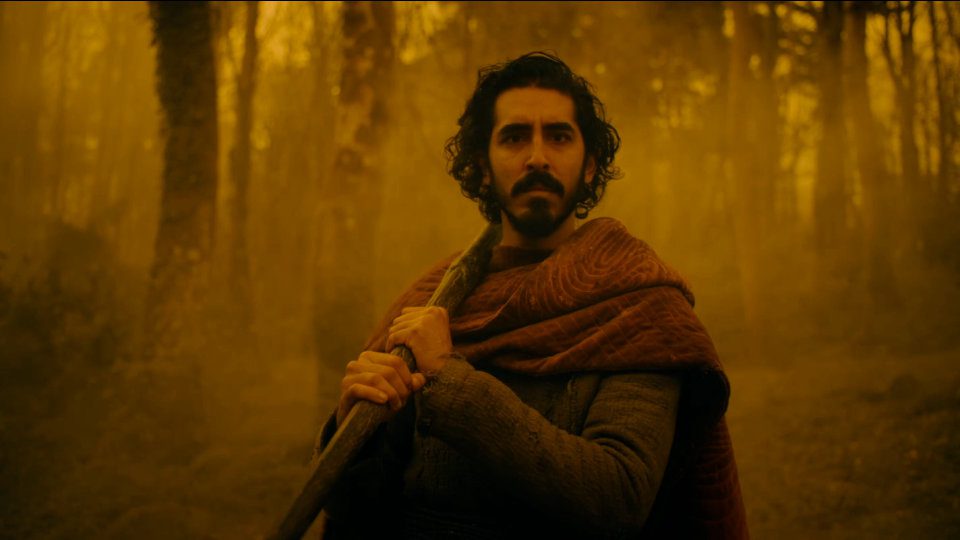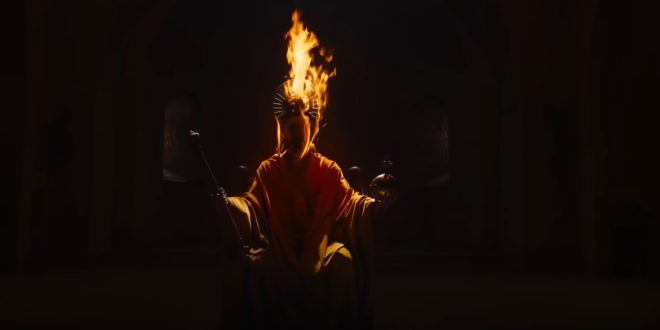Normally for a review like this, I would explain The Green Knight and its history, especially as a part of Arthurian mythos. But given its obscurity, I would like to open slightly differently.
The Green Knight is one of two premiere screening experiences permanently etched in my mind for how memorable the audience reaction was, even for a small theater population. The other was Don’t Breathe (2016 – read our review of the film here), and hopefully, like that, word of mouth will carry audience curiosity along, if not genuine excitement like my own.
For those of you who don’t know me personally, I live in the US where many theaters are still struggling to recover from this last year’s horrors. Many are still hesitant to gather in places like the theater, even people like me who live for film. But, being a fan of Arthurian stories, I’ve been following the development of The Green Knight for at least two years, and come hell or high water, I was going to be seeing this opening night. When I arrived, I expected to be met with a mostly empty theater, but was pleasantly surprised to see a couple taking pictures by the poster, whom I eagerly chatted with while we got concessions. Shout out to you, cool dude who recognized my Lying Cat shirt! Entering, there were about a dozen people there besides myself, a big surprise for an experimental A24 action film. By the final credits, half of the audience seemed bewildered, and the other rough half seemed to love it. It’s that kind of movie.
Synopsis for The Green Knight (2021):
King Arthur’s headstrong nephew embarks on a daring quest to confront the Green Knight, a mysterious giant who appears at Camelot. Risking his head, he sets off on an epic adventure to prove himself before his family and court.

At the outset of The Green Knight, when we meet Dev Patel’s young Gawain—not yet a Sir Knight—he’s pretty much everything Disney likes to throw at us for audience engagement: a rogueish but not too rough around the edges party boy who just needs to find out what he wants in life and grow up a bit. When The Green Knight challenges Arthur’s court, Gawain, unproven, is eager to meet the challenge. Little does he know of the world around him and how it works, but what he doesn’t know just presents more obstacles on his quest…
Qualitatively, this film has so many stellar elements. The audio mixing, especially in theaters, is phenomenal. The score fits in with the period. It’s not often I get to say this, but the foley work, especially for The Green Knight himself, is wonderful. Every movement of his has timbre, like a forest falling with every creak of his armor, adding to the surreality and magic of the film. The booming echo of his voice, accompanied by the wonderful baritone of Ralph Ineson—horror fans may recognize from Ari Aster’s The VVitch—has a remarkable presence in all of his sparse scenes. Camelot hasn’t looked this good in, well… ever. The sets are usually pretty tight, but all are stylistic and leave a strong impression.
There are amazingly intricate costumes throughout, especially for the royal characters like Arthur and Guinevere, but Gawain’s quest gear is nothing to scoff at either. The camera work by Andrew Droz Palermo paints a methodical yet surreal worldscape for the story and the quest. It turns a 6 day journey into something feeling like a true epic quest, like Lord of the Rings or the Odyssey.

The cast is also loaded with a lot of talent, but personally, the best-in-show performances come from Dev Patel and Alicia Vikander but for differing reasons. Patel shows the persistence and growth of character, Gawain, as well as the physical and ethical cracks in his armor, while Vikander juggles multiple performances, bringing a captivating screen presence all while saying either the sweetest—or most horrifying—things you’ll hear all day.
Also, there’s simply no way around saying it, but this film is hornier than the legend in every way. Love—lust, frankly—plays a large part of Gawain’s journey. It’s a part of what pushes him forward and causes him trouble later on. Seeing how sexuality is an innate part of humanity and storytelling, I appreciated how Lowery uses it. Arthurian mythos, especially in film, are often utopian and chaste—at least, until we get to the Guinevere/Lancelot thing—but it’s refreshing to see it played so matter-of-factly. The only film I can think that covers the sexuality and rougher edges of the mythos so plainly is the surreal Arthurian retelling, Excalibur (1981).
Like I mention in my audience observation, this movie will likely get a mixed reception, even amongst the usual A24 crowd. However, if anything I have mentioned has captured your interest, even in the slightest, I highly encourage you rush to your nearest theater to check out The Green Knight!
The Green Knight releases July 30, 2021, in US theaters.
 PopHorror Let's Get Scared
PopHorror Let's Get Scared




